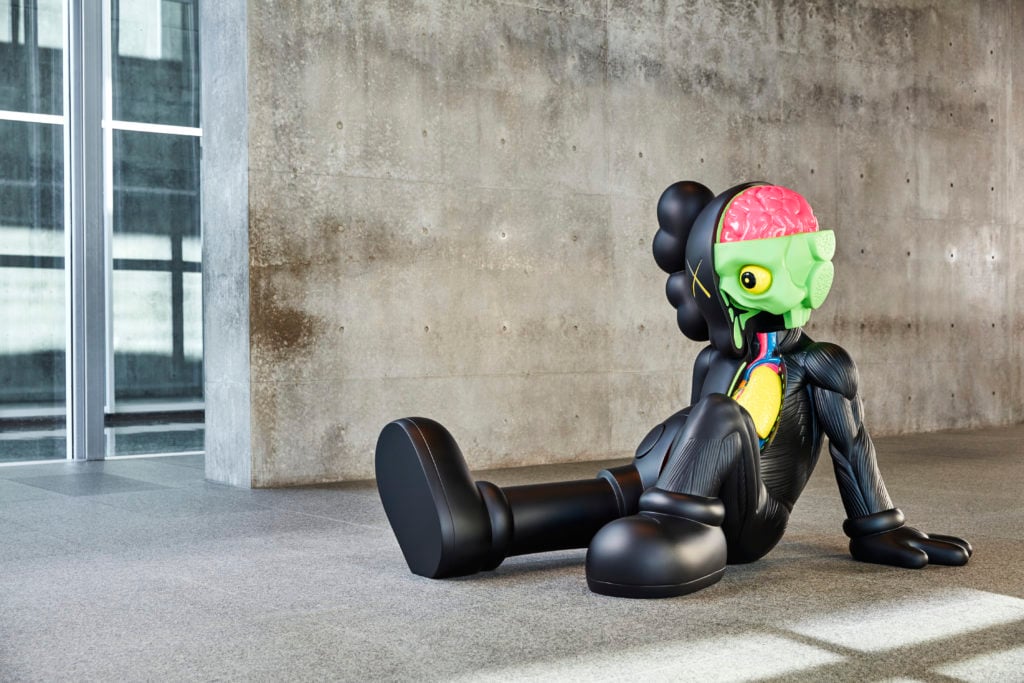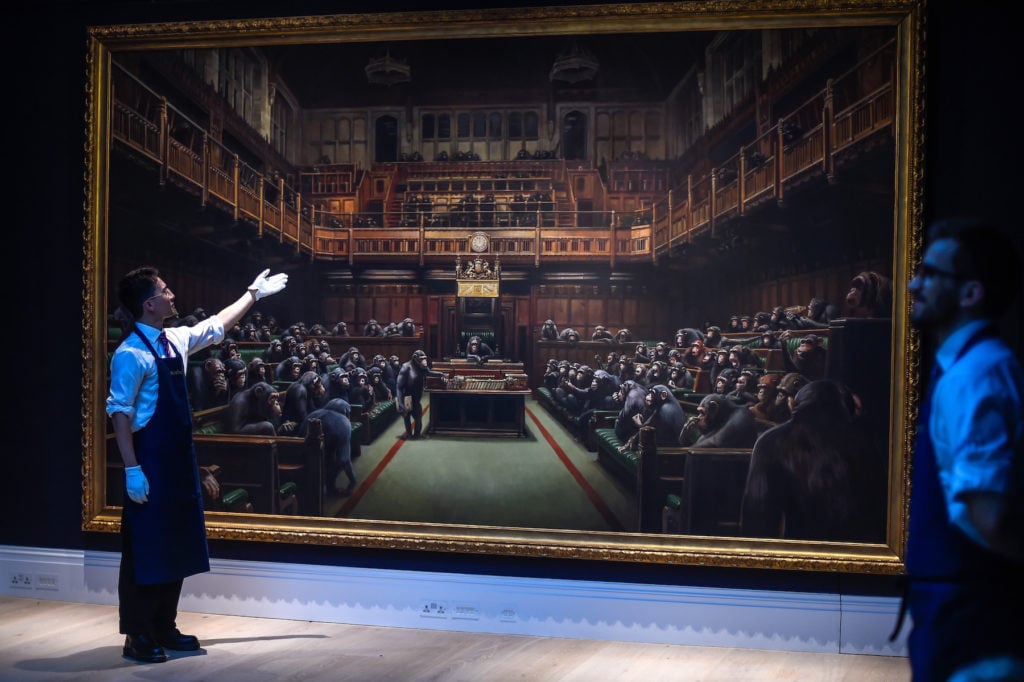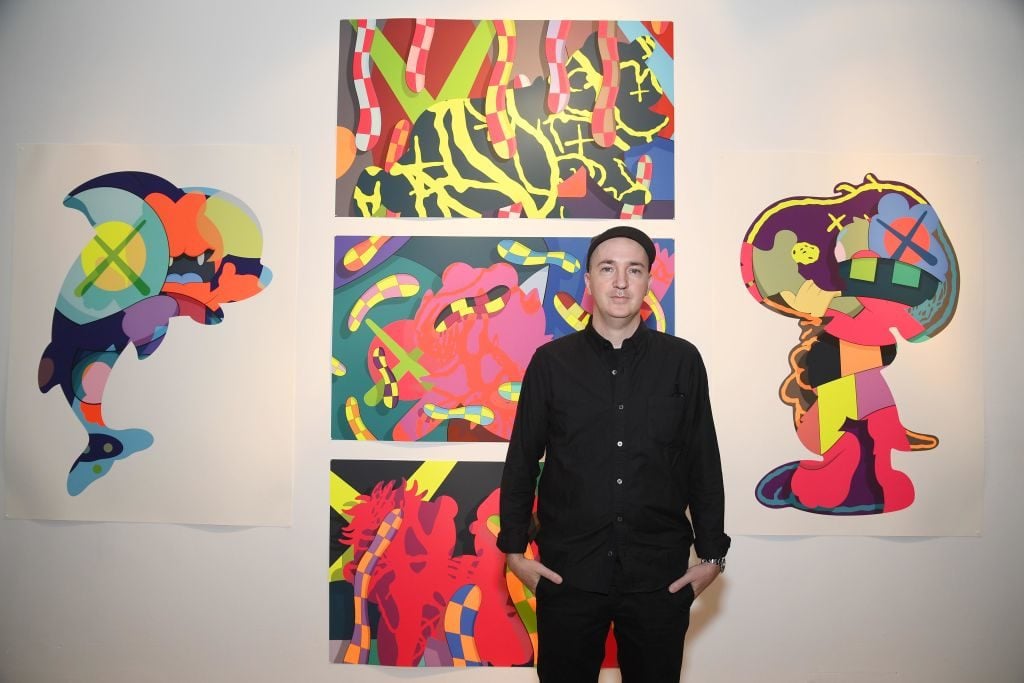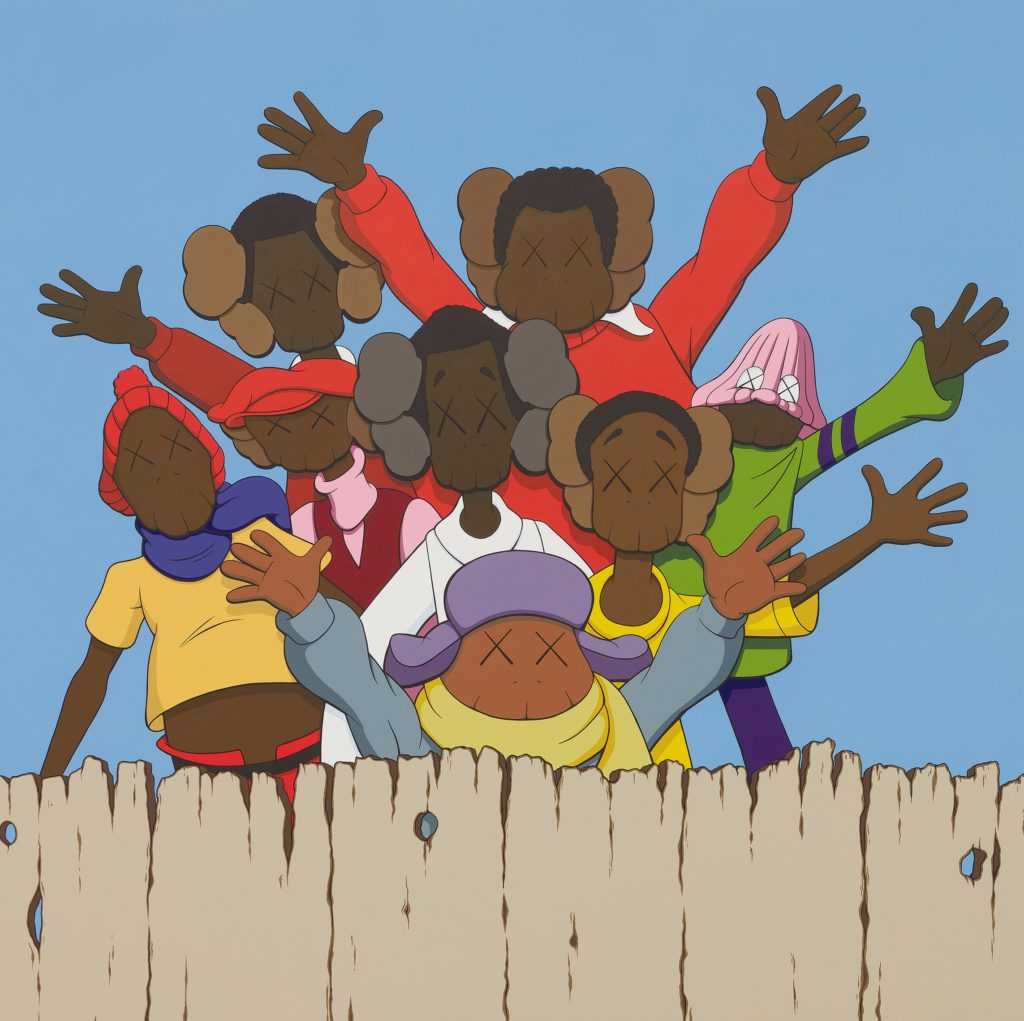Opinion
The Gray Market: Why KAWS Is More a Symbol of the Art Market’s Past Than Its Future (and Other Insights)
Our columnist on what the art world is missing about the recent market success of KAWS, and what it means for the next generation.

Every Monday morning, artnet News brings you The Gray Market. The column decodes important stories from the previous week—and offers unparalleled insight into the inner workings of the art industry in the process.
This week, taking it from the streets to the VIP suites…
KAWS AND EFFECT
On Thursday, Scott Reyburn at the Art Newspaper investigated the growing tension between populist and elitist rhetoric in the art market. And while I think he did an admirable job of assessing the scenario with a cool head and a valuable bit of distance from art-world orthodoxy, the piece also convinced me that the larger debate about structural reform in the market tends to leave one important factor unaddressed.
For context, Reyburn’s piece ultimately cautions members of the art establishment not to dismiss the recent commercial success of artists and galleries that have primarily pursued something resembling mass appeal rather than traditional dealer, curator, or mega-collector approval.
On the artist side, he references the record-incinerating auction performance of Banksy’s Devolved Parliament ($12.1 million at Sotheby’s London last month), KAWS’s The KAWS Album ($14.8 million at Sotheby’s Hong Kong this spring), and the lesser-known Stik’s Liberty print portfolio ($250,000 at Christie’s London in September). On the gallery side, he focuses on a trio of London spaces—Unit, Hang-up, and Maddox—that are growing by deliberately courting “a new breed of social-media-aware ‘consumer collector’” unconcerned with the legacy art world’s judgments on either creative merit or collecting norms.

Gallery workers display Banksy’s ‘Devolved Parliament’ prior to a photo call at Sotheby’s on September 27, 2019 in London, England. Photo by Peter Summers/Getty Images.
Reyburn wasn’t alone in addressing the theme this week. Pieces about the popular-art wave seemed to rise everywhere I looked in the art media the past seven days. In the New York Times, Robin Pogrebin unpacked how Yayoi Kusama’s work became mainstream enough to warrant a balloon in this year’s Macy’s Thanksgiving Day Parade; on Artsy, author-entrepreneur tag team Stefan Heidenreich and Magnus Resch delivered a combined manifesto and game plan for embracing art-market iconoclasm; and over on Artnet News, Eddie Chambers reminded readers that now-celebrated artist Charles White consistently made works (like jazz album covers and low-priced print portfolios) intended for mass consumption.
Although each of the pieces I mentioned above approaches populism from a slightly different angle, together they underscore that contemporary art is overdue for a reckoning with the mainstream. Most trustworthy sales metrics agree that the art market has been in a state of arrested development for close to a decade. For instance, inflation-adjusted auction sales of artworks peaked back in 2011 at about $6.9 billion, according to the latest Artnet Intelligence Report. Worse, the annual total hasn’t even gotten to within $1 billion of that apex since 2014.
So anecdotal and quantitative evidence both suggest the grounds of the art economy are fertile for change. But the amount and the timing of said change doesn’t just depend on the attitudes of buyers and sellers. Within the increasingly charged debate about the market’s future, the most consistently underrated obstacle to restructuring may be the nostalgic vision of success held by artists—and the two artists most frequently cast as harbingers of a new order help illustrate why.

Artist KAWS, honoree at the 2019 Tribeca Ball held by the New York Academy of Art. Photo: Dimitrios Kambouris/Getty Images.
A STUDY IN CONTRASTS
As Reyburn shows, almost anytime the conversation turns toward a potential populist insurgency in contemporary art, Banksy and KAWS are portrayed as the tip of the spear. In my mind, they should be—but only in the sense that both have gained traction in the blue-blood art market despite starting out in the wilderness beyond the castle walls. What gets glossed over too often in discussions about Banksy and KAWS, however, is that they have used their unlikely art-world clout to forge very, very different types of careers.
Yes, both artists are now fixtures in sales by the Big Three auction houses, maintain direct-to-consumer sales operations for what I’ll call alternative artworks—see: KAWS’s signature line of toys and Banksy’s Gross Domestic Product “home goods”—and, thanks to their street-art origins and populist appeal, both can quickly cause the veins in the average art-world veteran’s forehead to bulge to the circumference of a roll of pennies.
But aside from continued speculation that Sotheby’s was in on the now-infamous self-shredding of his painting Girl With Balloon (2006) at auction last year, Banksy has continued to favor a guerrilla practice that largely only engages with the traditional art system to troll it. He has not signed with a major gallery. He has not produced a single exhibition of his work at a major museum. He still hasn’t even revealed his identity.
KAWS provides a point of stark contrast. As my colleague Eileen Kinsella chronicled, the artist born Brian Donnelly has parlayed the global following he earned for tagging trains and crafting toys into an undeniably traditional version of success as a contemporary artist.
After showing for years with respected rebel Emmanuel Perrotin, KAWS bailed a few months back to show exclusively with the buttoned-up Skarstedt, which also champions classic artists like Pablo Picasso, Francis Bacon, and Yves Klein. He has already signed off on solo exhibitions at the Modern Art Museum of Fort Worth, the Yuz Museum in Shanghai, and a forthcoming show at the Brooklyn Museum in 2021. The auction success of his work owes in no small part to the significant position in it taken by the Mugrabi family, the powerful dealer-collectors who arguably move the Warhol market more than anyone. He was even the honoree at this year’s Tribeca Ball, the star-studded gala for the New York Academy of Art.
Add it all up, and it’s difficult for me to imagine much more divergent paths than the ones Banksy and KAWS have charted after their respective graffiti-powered breakthroughs into the public imagination. For a microcosm of the difference, consider that KAWS’s track record now includes making bronze sculptures shown in Skarstedt’s pristine white-cube gallery on the Upper East Side. As an artist in 2019, it’s hard to get more classical than that without rocking a beret.
But if you think the takeaway here is that KAWS became an art-world sell-out while Banksy deserves deep respect for remaining a real one, think again.

KAWS, UNTITLED (FATAL GROUP) (2004). Courtesy of Phillips.
NOSTALGIA ULTRA
Instead of rendering moralistic judgments on these two artists’ career arcs, I want to make a point with bigger implications for populism’s odds of reshaping the art market.
KAWS embodies what, in my experience, most artists still want in a career: blue-chip gallery representation that contextualizes their work with some of the unassailable greats; a growing list of significant museum exhibitions in institutions around the world; invitations to high-profile events that suggest they’ve earned the respect of the art world at large; a studio practice financially sustainable enough that they never have to spend time on any other kind of labor—and all without drastically altering the spirit of the works they make.
There’s nothing wrong with any of that! If I were an artist, it’s what I would want, too. But that’s also one of the overlooked challenges limiting the mainstream’s impact on contemporary art so far.
A populist restructuring of the art market doesn’t just require collectors to buy whatever they want regardless of the status quo, or dealers to radically rethink their strategies for reaching new buyers. It also requires artists to opt out of the old trappings of art-world success even if they have the opportunity to claim them. Because almost all of those trappings reinforce the exclusivity-driven, scarcity-based, gatekeeper-controlled art economy that has helped lock in nearly a decade’s worth of stagnation.
Almost every artist in every medium grows up under the influence of the previous generations’ dream. It’s a major reason why most musicians who become phenomenons through SoundCloud still want to win Grammys, and most filmmakers who sign a distribution deal with Netflix or Amazon still want their movie to get some kind of theatrical release. (Awards eligibility factors in, as well, but that too is an old-school landmark.) These types of symbols tend to get deeply ingrained in the psyche of anyone who spends years, and usually decades, striving to reach the mountaintop in their field.
Imagine how disorienting it would feel to be told halfway through your ascent that not only is the map you’ve been following dangerously wrong, but the destination you want to reach isn’t going to look much at all like the one that helped compel you to start climbing in the first place. The benefits will be different. The lifestyle will be different. The work itself may have to be different.
Think you might resist rerouting, even if you recognized intellectually that it was good advice?
The classical trappings of artistic success are deeply appealing, and I wouldn’t blame any artist who refused to turn them down when they became available. But if most young artists cling to the nostalgic vision of their role, it will limit the amount of structural change in the art world as surely as if most young dealers and young collectors do the same. The people featured on museum banners, gala invitations, and art-fair sales reports will just have more unorthodox origin stories than they used to, while the mass audience that shaped those stories gets left at the door.
That’s all for this week. ‘Til next time, remember: widespread change is just a collection of personal choices.
Follow artnet News on Facebook:
Want to stay ahead of the art world? Subscribe to our newsletter to get the breaking news, eye-opening interviews, and incisive critical takes that drive the conversation forward.

It looks like you're using an ad blocker, which may make our news articles disappear from your browser.
artnet News relies on advertising revenue, so please disable your ad blocker or whitelist our site.
To do so, simply click the Ad Block icon, usually located on the upper-right corner of your browser. Follow the prompts from there.
SHARE

No comments:
Post a Comment